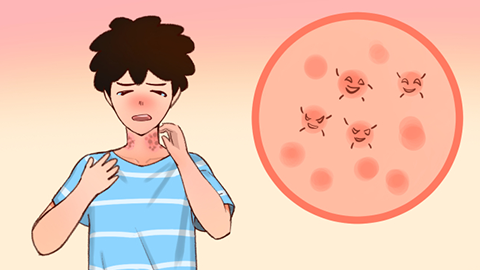How to distinguish red bumps from flea bites and eczema
There are significant differences between flea bites and eczema in terms of causes, symptom presentation, distribution characteristics, duration and color changes, as well as treatment approaches. If abnormalities occur, prompt medical attention is recommended. Detailed analysis is as follows:

1. Causes: Flea bites primarily result from inflammatory reactions caused by flea secretions after they bite the skin. Eczema, however, may be triggered by prolonged contact with allergens, such as animal fur, pollen, etc., leading to skin barrier dysfunction.
2. Symptom Presentation: Flea bites typically appear as small red or dark red bumps, round or oval in shape, measuring 1–3 mm in diameter. Often there is a tiny red dot at the center of each bump, which marks the flea's bite. Eczema presents as rashes including papules, vesicles, and erythematous plaques, often accompanied by persistent itching.
3. Distribution Characteristics: Flea bites often occur in clusters because fleas bite in a hopping pattern, frequently biting multiple times in close proximity. Eczema rashes can appear anywhere on the body and tend to recur frequently.
4. Duration and Color Changes: The itching from flea bites may intensify over several days following the bite and remain red in color. They generally take 1–2 weeks to fully resolve, gradually changing from red to dark purple or brown over time. Eczema lesions tend to last longer, and color changes are less apparent compared to flea bites.
5. Treatment Approaches: Flea bites can be treated with medications such as calamine lotion, mometasone furoate cream, or fluticasone propionate cream, as directed by a physician. Simultaneously, the living environment should be cleaned and fleas eradicated. Eczema treatment may involve topical application of hydrocortisone cream, tacrolimus ointment, or desonide cream, as advised by a doctor. Avoidance of allergens and maintenance of skin cleanliness and hydration are also essential.
It is advisable to maintain good skin hygiene and protection in daily life, including basic skincare measures such as moisturizing and sun protection, to reduce the risk of developing skin diseases.






